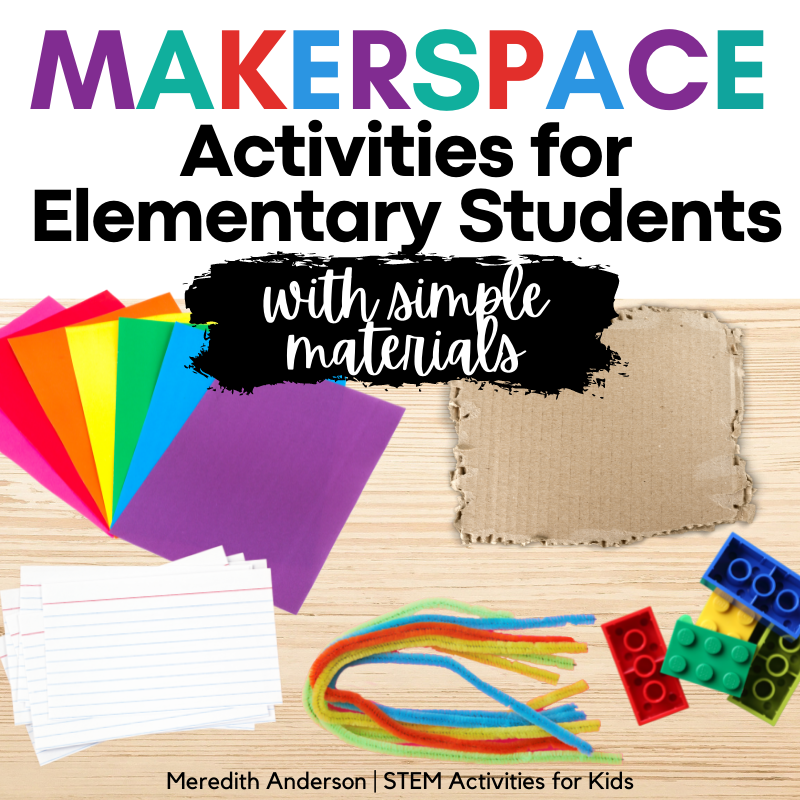
Makerspaces are a great way to spark curiosity and ingenuity for kids. If you haven’t tried using a makerspace before, or you are looking for some fresh ideas, I have some for you below!
What is a makerspace?
First of all, a makerspace doesn’t have to be a physical space! It can be, if you have the room for it. But if not, think of it as a mentality. Makerspace can be time set aside to explore, tinker, and build. While makerspaces can include STEM challenges, I prefer to keep them separate. Makerspaces and STEM go hand-in-hand; the skills students learn in each will apply to the other!
Makerspaces can be anything from no/low tech to high tech, with tools like 3D printers, laser cutters, woodworking tools, and beyond. However, you don’t need fancy equipment to implement a makerspace! I have a set of makerspace tasks for you below that require primarily index cards.
Why You Should Try a Makerspace
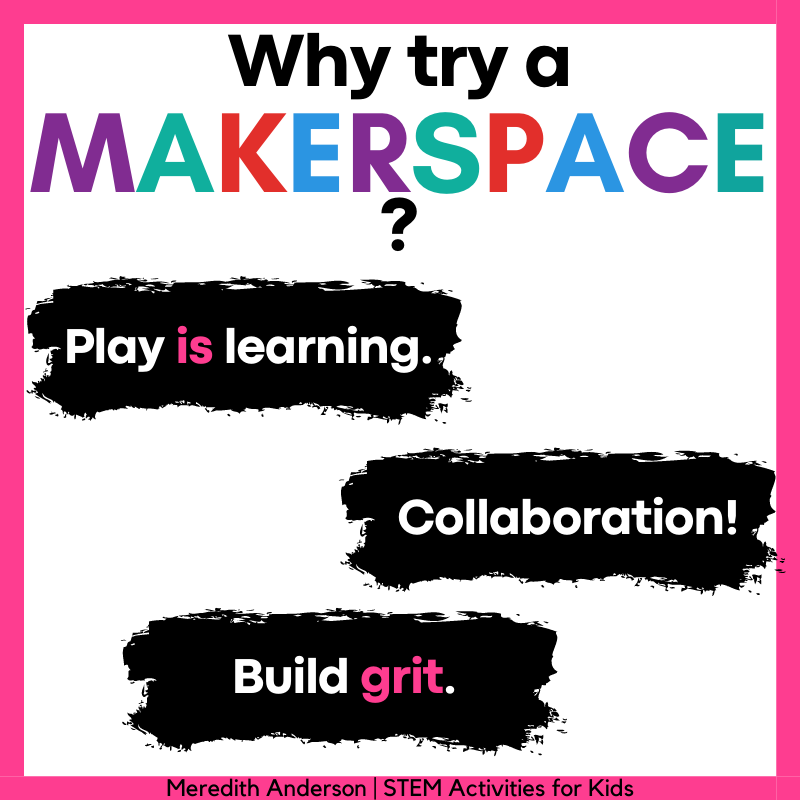
There are so many reasons to try a makerspace! Here are a few of my favorite reasons:
- Students get to explore and play with a variety of materials and tools. By allowing for open-ended exploration, students will learn through trial and error and get a hands-on experience that likely isn’t available anywhere else! Remember, play is learning. Read more about the importance of play at the American Academy of Pediatrics or watch David Groth’s TEDx talk.
- Makerspaces are naturally collaborative spaces. You will inevitably end up with experts in a variety of areas, whether it’s a tool, a way of joining materials, or the best way to organize loose parts. Experts help others and your students will end up having a collective knowledge of the makerspace that elevates everyone’s expertise!
- Makerspaces build character. I’m not just talking about the grit that comes with persistence, but also respect of property and spaces by keeping the makerspace tidy, and respect of self. Even if a project isn’t “successful,” something will have been learned. This responsibility factor is so important! Students can even help create your makerspace’s rules.
5 Tips for Setting up Elementary Makerspaces
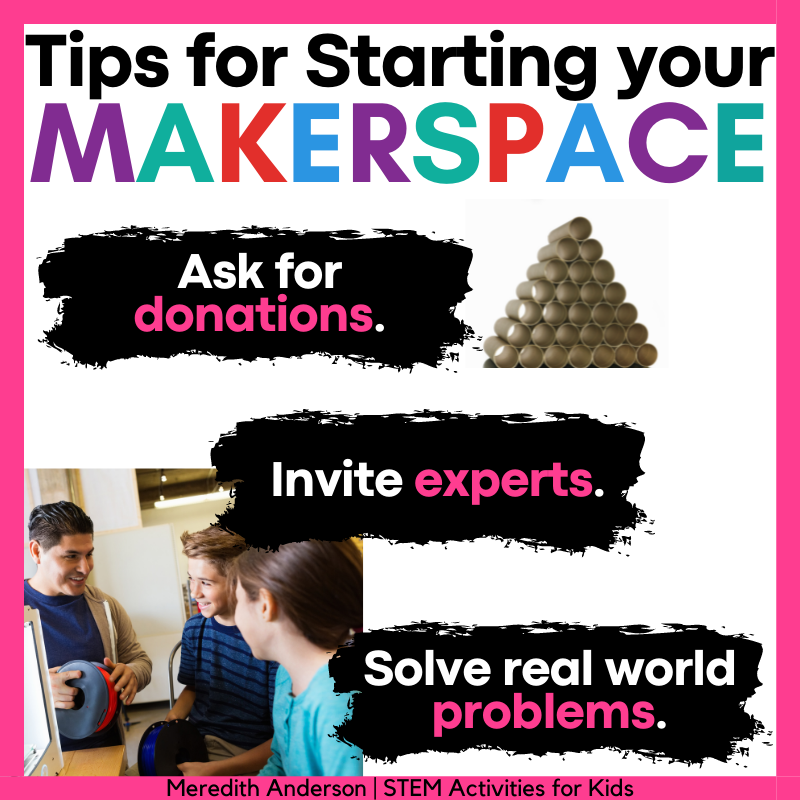
Ask for donations Please don’t try to stock your makerspace yourself! Ask families for Legos they are no longer using, and for empty cereal boxes (these are awesome for building), or even old electronics. You can ask local businesses to sponsor your makerspace, too!
Set aside time for clean-up: Make sure to leave at least 5 minutes at the end of makerspace time to have students tidy up the makerspace. For some projects, they may even be able to disassemble their creations for re-use.
Invite guests! Not an expert on hand tools? Want to do some circuit exploration but it isn’t your forte? Not sure how to cut and connect PVC pipes? Ask for help! Many parents are in professions where they can demonstrate tool use or tricks of the trade. If you don’t have adults with skills in these areas, having extra sets of hands is always useful in a makerspace.
Solve a problem together. Is there a small project your students can work on to solve a problem in their classroom, in the cafeteria, or at your school playground? Can you work on creating a community garden together with items from the makerspace (this is one of those times where inviting guests and asking for donations would be helpful)? When you solve actual problems together, you can make a real difference in your community.
Include a BREAKERSPACE! One of the best ways to learn about how to create is to reverse-engineer, take apart, and examine. If you able to source old, unused electronics, tools, etc. this is a great way for students to learn. Please take care to make sure the items are safe to disassemble, particularly if they have capacitors. As a rule of thumb, stay away from old TVs, computer monitors, and microwave ovens. Smaller items like flashlights, electronic toys, and even hard drives are great learning tools. Read more about How to Build Knowledge in Breakerspaces on NSTA.
A note about 3D Printers: I get a lot of questions in the STEM Teachers Group on Facebook asking what the best 3D printer is. You can absolutely try using a 3D printer in your makerspace, but my (possibly unpopular) opinion is that 3D printers are not the necessarily the best big ticket item to have in a makerspace. In addition to being finicky to keep operational, they also make a lot of plastic junk that isn’t good for the environment. Elementary students are, for the most part, not ready to undertake 3D design at the level that 3D printers make sense to use. I would recommend saving 3D printers for middle or high school students, and allow elementary kids to use low-tech materials. If you do want to use 3D printers, please try to be mindful of what students are creating, and consider limiting the number of 3D projects you do per year. Students will even benefit from tinkering in CAD programs without actually printing their design!
Makerspace Ideas for Kids
Sometimes, having too much freedom is overwhelming to kids. Why not give them appropriate and interesting choices? I have created these Makerspace Tasks that are just right for elementary students! For some of the tasks, students may be able to figure out on their own. For others, they may want to watch a YouTube video for tips, find a tutorial on Instructables, or ask an “expert” (another student who might have strong making skills). Then, after they have made something once, they might have ideas for modifications or improvements.
Simple Materials Can Offer High Engagement
You do not need a lot of fancy equipment to have success in your elementary makerspace. Simple materials can be recyclables like paper, or reusable materials such as building bricks or wooden planks. You might be surprised at how many things can be created with just a piece of paper!
Make-Tac-Toe Free Makerspace Choice Board
I have created makerspace choice boards so that you can start with or focus on an essential building material during makerspace time, but not need hundreds of different items. That means if you are in a small space or even a mobile cart, you can plan ahead with limited materials and students can still be successful! Students can create one or more projects during each makerspace time, deciding at the start which 3 they want to focus on (to get 3 in a row). You can also use these over a nine week period to have students fill the whole board! Choice boards are a great and easy way to implement makerspace activities for elementary students.
The makerspace choice board for index cards is free!
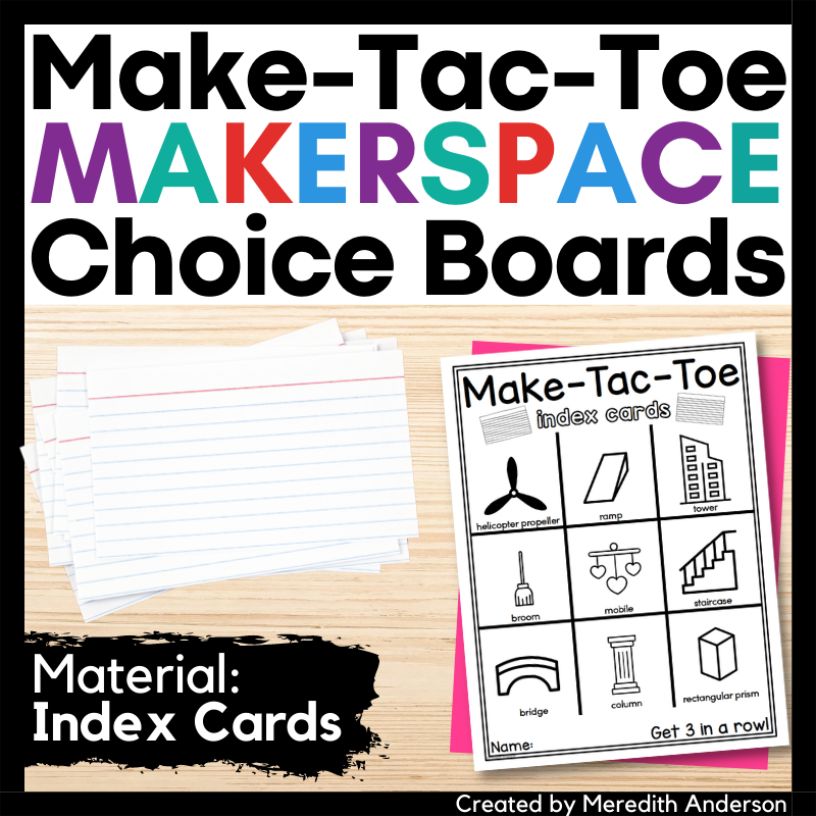
Get Even More Makerspace Choice Boards!
This bundle has
- editable rubrics
- editable donation request letters
- editable digital recording pages PLUS printable recording pages
- 9 tasks for each of the following materials: building toys like LEGOs, cardboard, craft sticks, index cards, paper, paper plates, pipe cleaners, and wooden planks.
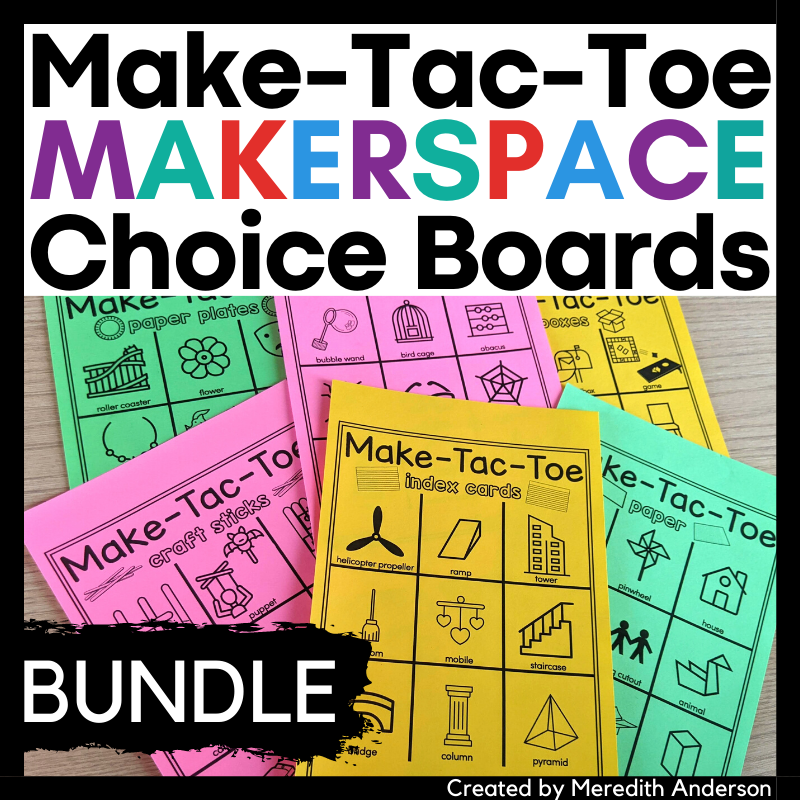
Save this post for later by pinning it:
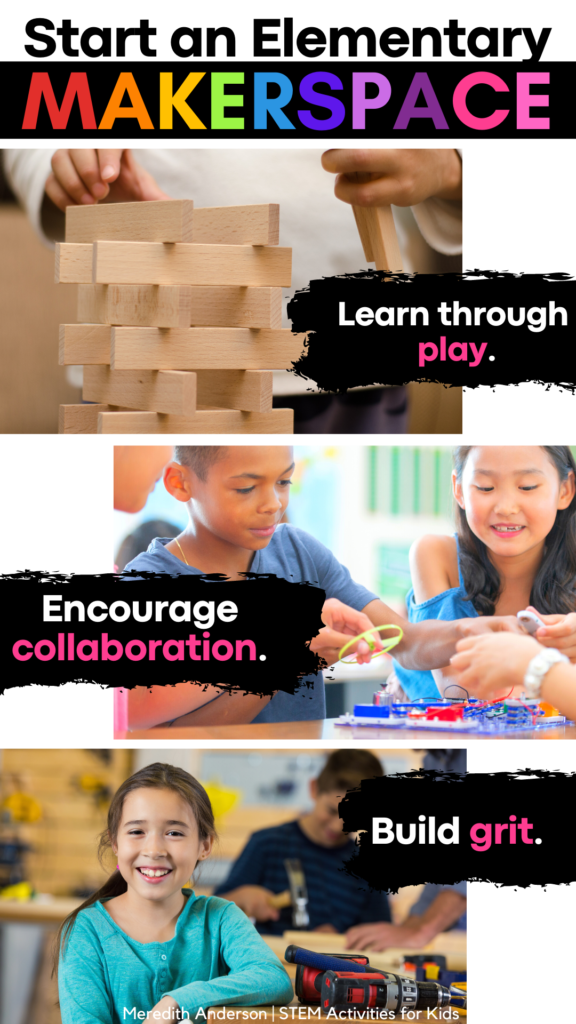

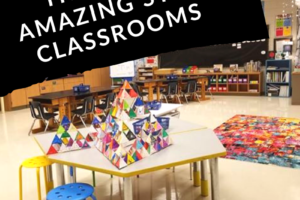
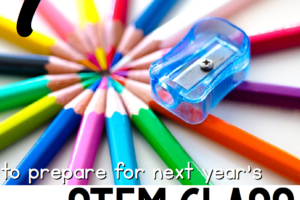
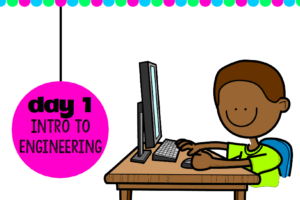
Leave a Reply
Your email is safe with us.